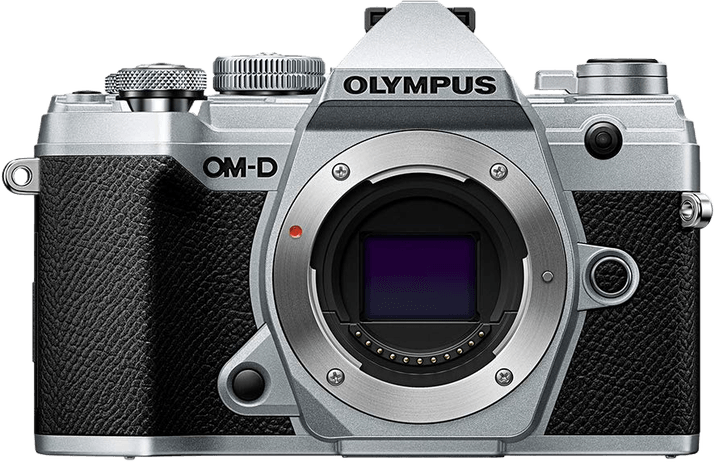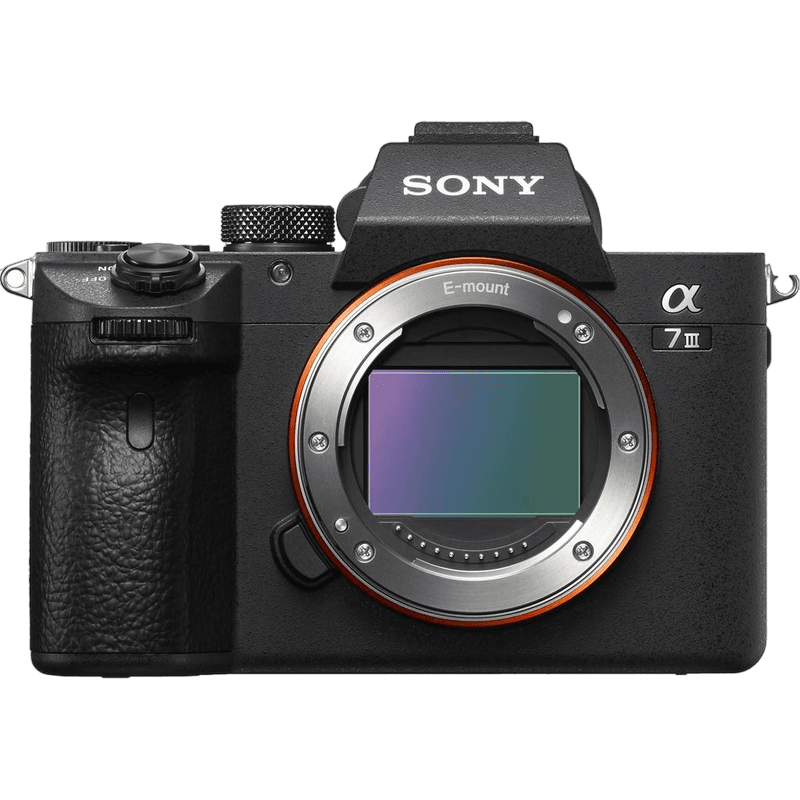Olympus OM-D E-M5 Mark III vs Sony a7 III Comparison
Olympus OM-D E-M5 Mark III

Sony a7 III

The Sony a7 III emerges as the winner with a score of 81, while the Olympus OM-D E-M5 Mark III trails behind at 65/100. Both cameras are mirrorless and were introduced in 2018 and 2019, respectively. They share similarities in their camera type and size, with the Sony a7 III slightly larger at 127 x 96 x 74mm compared to Olympus’ 125 x 85 x 50mm.
The Sony a7 III outperforms the Olympus OM-D E-M5 Mark III in various aspects, which justifies its higher score. However, the Olympus camera is lighter, weighing only 414g compared to the Sony’s 650g, making it more portable and easier to handle.
Despite the difference in scores, both cameras offer unique advantages. The Sony a7 III provides superior performance, while the Olympus OM-D E-M5 Mark III offers a more compact and lightweight design. Ultimately, the choice between the two cameras depends on individual preferences and specific photography needs.
Olympus OM-D E-M5 Mark III vs Sony a7 III Overview and Optics
The Sony a7 III outperforms the Olympus OM-D E-M5 Mark III in terms of optics, scoring 81/100 compared to the Olympus’ 60/100. Both cameras have some common specifications, such as 20 and 24.2 megapixels, CMOS sensor type, and image stabilization. Additionally, they both feature advanced processors, with the Olympus using a TruePic VIII and the Sony a7 III utilizing a Bionz X processor.
The Sony a7 III excels due to its higher DXOMARK sensor score of 96, a full frame sensor size, and a Sony FE lens mount. These features contribute to its superior image quality and performance. The full frame sensor size allows for better low-light performance and a shallower depth of field, while the Sony FE lens mount offers a wide selection of high-quality lenses.
On the other hand, the Olympus OM-D E-M5 Mark III has a faster shooting speed of 30, compared to the Sony a7 III’s 10. This makes it more suitable for capturing fast-moving subjects, such as sports or wildlife photography. The Micro Four Thirds sensor size and Micro 4/3 lens mount provide a compact and lightweight system, making it a more portable option.
To conclude, the Sony a7 III is the superior choice for photographers seeking top-notch image quality and performance, thanks to its full frame sensor, higher DXOMARK sensor score, and versatile lens options. However, the Olympus OM-D E-M5 Mark III offers advantages in shooting speed and portability, making it a suitable option for specific photography needs.
Olympus OM-D E-M5 Mark III vs Sony a7 III Video Performance
The Olympus OM-D E-M5 Mark III outperforms the Sony a7 III in video capabilities, with a score of 91/100 compared to 70. Both cameras offer 4K video resolution, but the Olympus has superior video dimensions at 4096 x 2160, while the Sony’s dimensions are 3840 x 2160.
The Olympus also boasts a higher maximum video frame rate of 120fps, significantly greater than the Sony’s 30fps. This means the Olympus can capture smoother slow-motion footage.
Based on video performance alone, the Olympus OM-D E-M5 Mark III is the clear winner. Its higher video dimensions, frame rate, and time-lapse functionality give it an edge over the Sony a7 III. While the Sony may have strengths in other areas, those seeking a camera primarily for video should consider the Olympus as the superior option.
Olympus OM-D E-M5 Mark III vs Sony a7 III Features and Benefits
The Olympus OM-D E-M5 Mark III wins in the features comparison with a score of 83/100, while the Sony a7 III follows closely behind with a score of 81/100. Both cameras share several common specifications, making them comparable in terms of features.
Both the Olympus OM-D E-M5 Mark III and the Sony a7 III have a 3-inch screen, touchscreen capabilities, flip screens, GPS, WIFI, and Bluetooth connectivity. These similarities make both cameras suitable for modern photography needs and provide users with a convenient and connected shooting experience.
The Olympus OM-D E-M5 Mark III edges ahead of the Sony a7 III with a higher screen resolution of 1,040,000 dots compared to the Sony’s 921,600 dots. This higher screen resolution means that the Olympus camera provides a clearer and more detailed display, making it easier for photographers to review their shots and make adjustments as needed.
However, the Sony a7 III does not lag far behind in terms of features, and its slightly lower score does not necessarily mean it is a lesser camera. The two-point difference may not significantly impact the overall user experience, and users may still find the Sony a7 III’s features to be impressive and valuable in their photography.
Ultimately, the Olympus OM-D E-M5 Mark III is the winner in terms of features, but the Sony a7 III remains a strong contender. Users should consider their specific needs and preferences when choosing between these two cameras. Both offer a range of useful features and share many common specifications, making either camera a suitable choice for photography enthusiasts.
Olympus OM-D E-M5 Mark III vs Sony a7 III Storage and Battery
The Sony a7 III outperforms the Olympus OM-D E-M5 Mark III in storage and battery, scoring 81 compared to the Olympus’ 35/100. Both cameras accept SD/SDHC/SDXC memory cards, but the Sony a7 III also supports Memory Stick Duo/Pro Duo/Pro-HG Duo cards and offers two memory card slots, while the Olympus only has one slot and is UHS-II compatible.
The Sony a7 III has a significantly longer battery life of 750 shots, using the NP-FZ100 battery type. In contrast, the Olympus OM-D E-M5 Mark III provides 310 shots with its BLS-50 battery.
Olympus OM-D E-M5 Mark III vs Sony a7 III Alternatives
Still not sure which camera to buy? Try these trending camera comparisons to inspire you:
